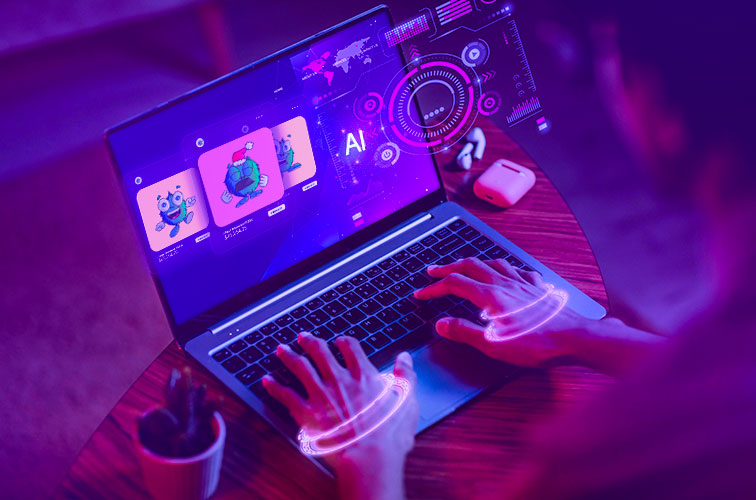The use and spread of blockchain technology increased notably in the last few years. The NFT technology is one of the most intriguing and revolutionary developments in this area. NFT has heralded the new generation revolution into the artwork, as well as the collectibles industry. This article explores the current developments in NFT markets and suggests ways that businesses or developers can remain on top.
Understanding NFTs and Blockchain Technology
It is essential to understand NFTs and blockchain technology before getting into the trends and innovations. They are individual digital things that are conserved in a blockchain. They differ from other cryptocurrencies like Bitcoin or Ethereum, which have equal value at any point. It is because of this individuality and rarity that people value and seek NFTs.
However, there is a base technology known as blockchain that supports the generation and verification of the process of NFTs. A network-based, open log where all digital currency activities are conducted safely & irreversibly. Blockchain developers have an important place in constructing and launching the foundation of digital asset markets.
The Rise of NFT Marketplaces
The rise in NFT marketplaces is one of the main tendencies within the NFT space. The platforms have become markets where people buy and sell NTFs and trade them. Examples of NFT marketplaces are OpenSea, Rarible and SuperRare. These offer worldwide markets for artistic creation, collection, and an easy transaction of their work’s digital forms.
NFTs Beyond Art and Collectibles
While art and collectibles have dominated the NFT marketplace so far, we are witnessing an expansion of NFT use cases into various industries. Music, gaming, virtual real estate, and even sports are starting to explore the potential of NFTs. Musicians can release limited edition albums or songs as NFTs, providing a new revenue stream and direct engagement with fans. In the gaming world, NFTs can represent in-game items, characters, or even entire virtual worlds. This intersection between NFTs and different industries opens up a world of possibilities for innovation and creativity.
Sustainability and Environmental Concerns
The popularity of NFTs increases, as does the concern regarding their impact on the environment. The power consumption of blockchain networks, especially blockchains that are based on proof of work, like Ethereum, has raised doubts regarding the viability of NFTs. But, innovators and developers are working hard on ways to alleviate the problem. The creation of more energy-efficient consensus algorithms and the investigation of new blockchain designs are just two of the ways in which the industry is dealing with these issues.
Cross-Chain Interoperability
Interoperability between different blockchain networks is another trend which is gaining traction in the NFT space. Currently, most NFTs are built on the Ethereum blockchain. However, developers are exploring solutions that allow NFTs to be seamlessly transferred between different blockchains. This cross-chain interoperability opens up new opportunities for collaboration and expands the reach and liquidity of NFTs.
Enhanced User Experience
User experience is a crucial factor for the success of any marketplace. NFT platforms are continuously improving their user interfaces and adding features to enhance the overall experience. This includes intuitive browsing and searching functionalities, improved transaction processes, and better integration with wallets and digital asset management tools. User-friendly interfaces and seamless interactions are essential for attracting and retaining users in the competitive NFT marketplace.
Fractional Ownership and DeFi Integration
Fractional ownership is an emerging trend in the NFT space, allowing multiple individuals to own a fraction of an NFT. This concept opens up investment opportunities for individuals who may not have the means to purchase an entire NFT. Additionally, the integration of decentralized finance (DeFi) protocols with NFTs enables the creation of new financial instruments and liquidity pools. This integration brings traditional financial concepts such as lending, borrowing, and yield farming to the world of digital assets.
AI and NFTs

The convergence of artificial intelligence (AI) and NFTs is an exciting area of innovation. AI algorithms can analyze and interpret vast amounts of data, enabling the creation of unique and personalized NFTs. AI-generated art, music, and virtual characters are just a few examples of how these technologies can intersect. Combining AI and NFTs opens up new possibilities for creativity and expression.
Final Thoughts
The NFT marketplace is driven by advances in the field of blockchain technology as well as the innovative thinking of entrepreneurs and developers. Through exploring the possibilities in blockchain technology, increasing the speed and scale, promoting interoperability, assuring sustainability, increasing authenticity and security, integrating to DeFi as DAOs as well and investigating NFT fractionalization, participants can be at the top of the NFT market and profit from the opportunities it provides.
Disclaimer:Our website provides educational information only and is not intended to provide financial or professional advice. We are not responsible for the accuracy, reliability, or completeness of the information provided. Any reliance you place on the information is at your own risk, and we recommend consulting a qualified professional before making any financial or investment decisions. We are not liable for any loss or damage resulting from the use of our website or the information provided.
